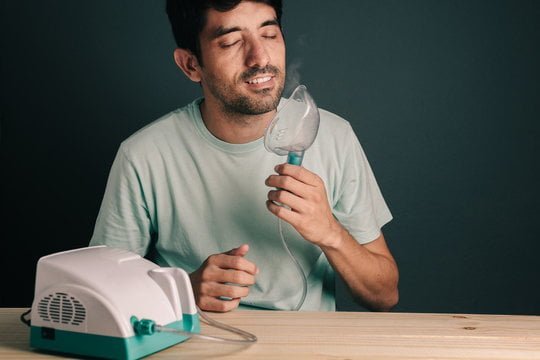Introduction
In the realm of medical technology, nebulisers stand out as remarkable devices, offering a lifeline to those battling respiratory ailments. Understanding how these devices function and who stands to benefit from their use is crucial for both patients and healthcare professionals alike.
What are Nebulisers?
Nebulisers are medical devices designed to convert liquid medication into a fine mist or aerosol. This mist can then be inhaled directly into the lungs through a mask or mouthpiece, providing targeted relief for respiratory conditions such as asthma, chronic obstructive pulmonary disease (COPD), cystic fibrosis, and more.
How Do Nebulisers Work?
Atomization Process
The primary mechanism behind nebulisers involves the atomization of liquid medication. This process begins when the medication is poured into the nebuliser’s chamber. The device then utilizes various methods, such as ultrasonic waves or compressed air, to break down the liquid into tiny droplets, creating the mist that can be inhaled.
Delivery of Medication
Once the medication is atomized, the nebuliser delivers it directly into the patient’s airways through a mask or mouthpiece. This targeted delivery ensures that the medication reaches the lungs efficiently, providing rapid relief from respiratory symptoms.
Customization and Control
Modern nebulisers offer advanced features that allow for precise control over the aerosolization process. Patients and healthcare providers can adjust settings such as particle size and flow rate to tailor the treatment to individual needs, ensuring optimal efficacy and comfort.
Who Benefits from Nebulisers?
Asthma Patients
Asthma is a chronic respiratory condition characterized by inflammation and narrowing of the airways, leading to symptoms such as wheezing, coughing, and shortness of breath. Nebulisers play a crucial role in managing acute asthma attacks by delivering bronchodilators directly into the lungs, providing rapid relief and preventing potentially life-threatening complications.
COPD Patients
Chronic obstructive pulmonary disease (COPD) encompasses a group of progressive lung diseases, including chronic bronchitis and emphysema, that cause airflow obstruction and breathing difficulties. Nebulisers are often used in COPD management to administer bronchodilators, corticosteroids, and other medications that help alleviate symptoms and improve lung function.
Cystic Fibrosis Patients
Cystic fibrosis is a genetic disorder that affects the lungs and digestive system, leading to the production of thick, sticky mucus that can obstruct the airways and promote bacterial growth. Nebulised therapies, such as mucolytics and antibiotics, are essential components of cystic fibrosis treatment, helping to clear mucus and prevent infections.
Pediatric Patients
Children with respiratory conditions, such as asthma or respiratory syncytial virus (RSV) infection, often require nebulised medications due to their inability to use inhalers effectively. Nebulisers offer a child-friendly alternative, allowing young patients to receive the necessary medication with ease and comfort.
Conclusion
In conclusion, nebulisers are invaluable tools in the management of various respiratory conditions, offering targeted delivery of medication directly into the lungs. From asthma and COPD to cystic fibrosis and pediatric respiratory illnesses, nebulisers cater to a diverse range of patients, providing rapid relief and improving quality of life.
For purchase of Nebulisers, visit Our Products page for Nebulisers.
Visit the supporting link to know more about Nebulisers.





